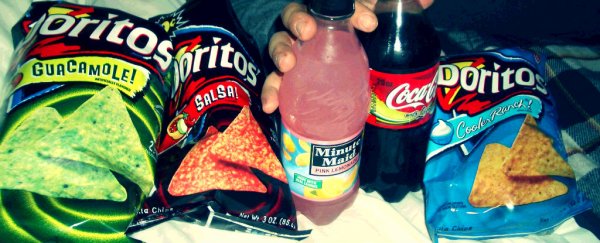Are you sure you know what your favourite foods are? Recent research has found that the packaging that contains our food and drink can influence how we perceive them to taste. And now scientists are trying to figure out exactly how our brain mixes signals from all five senses to construct a particular version of reality.
The research suggests that our sense of taste is not completely isolated from our sense of sight - the two bleed into each other, but where to draw the line is difficult to determine. In the case of items we might buy at the supermarket or order in a cafe, researchers led by psychologist Charles Spence from the University of Oxford in the UK argue that almost half of our overall food and drink experience (whether at a fast food joint or an upmarket restaurant) is influenced by sound, sight, and touch.
Over the course of his research and previous studies on the topic, Spence has found that strawberry-flavoured mousse tastes up to 10 percent sweeter when coming from a white container rather than a black one, and that coffee tastes more intense when it's drunk from a white mug rather than a clear one.
"This year alone, Spence has submitted papers showing that a cookie seems harder and crunchier when served from a surface that has been sandpapered to a rough finish, and that Colombian and British shoppers are twice as willing to choose a juice whose label features a concave, smile-like line rather than a convex, frown-like one," Nicola Twilley writes for The New Yorker.
Most of us will admit to eating snacks straight out of the packet - because who has time for pouring chips into a bowl? - and that's exactly what marketing departments and product designers across the world are banking on.
One of Spence's colleagues is currently investigating the popping and whooshing sound made by different soft drink can designs when they're cracked open. It might seem irrelevant to your enjoyment of the carbonated beverage inside, but if there are lessons to be learned, the drinks companies want to know about them, and Spence's research suggests that taste is not about taste alone.
"It's looking at how auditory aspects of packaging can subliminally affect our perception of the product," Cormac Neeson from Crown Holdings, the company that supplied the researchers with the cans for their experiment, told Twilley. "And how then, we hope, we'd be able to maybe engineer those to give people an enhanced, improved experience through the packaging."
You may not remember it, but back in 2011, Coca-Cola issued a limited edition white Coke can to raise awareness and funds for endangered polar bears. The can was quickly withdrawn after people complained the cola recipe had also been changed. Cadbury's received similar feedback from customers after altering the shape of the chunks in their Dairy Milk bar.
"These things might seem trivial or esoteric," Spence told The New Yorker. "But they do exist, and most of us share them, so they must be pretty fundamental."
Why they exist is less clear, but if further research can predict the effects of packaging more accurately, then there are many potential benefits. Imagine being able to reduce the amount of sugar or salt in foods by accompanying the changes with a tweak to the packaging - we would all be eating more much healthily without even realising it.
